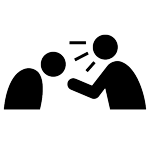A Cross-Government statutory definition of domestic abuse is set out in the Domestic Abuse Act 2021. The definition of domestic abuse is in two parts. The first part deals with the relationship between the abuser and the abused. The second part sets out what abusive behaviour is.
The Act defines domestic violence and abuse as follows:
Behaviour of a person (“A”) towards another person (“B”) is “domestic abuse” if A and B are each aged 16 or over and are personally connected to each other, and the behaviour is abusive.
People are ‘personally connected’ if they are:
- intimate partners,
- ex-partners,
- family members or
- individuals who share parental responsibility for a child.
The victim and the person harming them do not need to live in the same household.
Behaviour is “abusive” if it consists of any of the following:
- physical or sexual abuse;
- violent or threatening behaviour;
- controlling or coercive behaviour;
- economic abuse;
- psychological, emotional or other abuse; and it does not matter whether the behaviour consists of a single incident or a course of conduct.
“ Economic abuse” involves behaviours that interfere with an individual’s ability to acquire, use and maintain economic resources such as money, transportation and utilities. It can be controlling or coercive. It can make the individual economically dependent on the abuser, thereby limiting their ability to escape and access safety.
For the purposes of the Act: A’s behaviour may be considered to be behaviour directed “towards” B, even though it might be directed at another person (for example, B’s child).
The Act also positions children as direct victims in their own right - this means a child is considered to be a victim of domestic abuse if they see or hear, or experience the effects of, the abuse, and are related to A or B.









